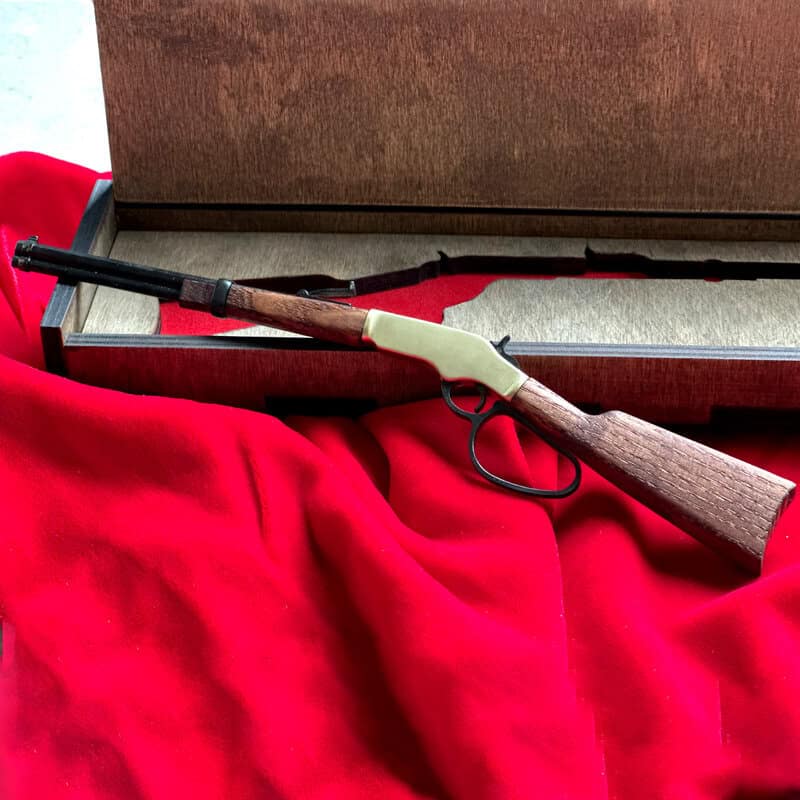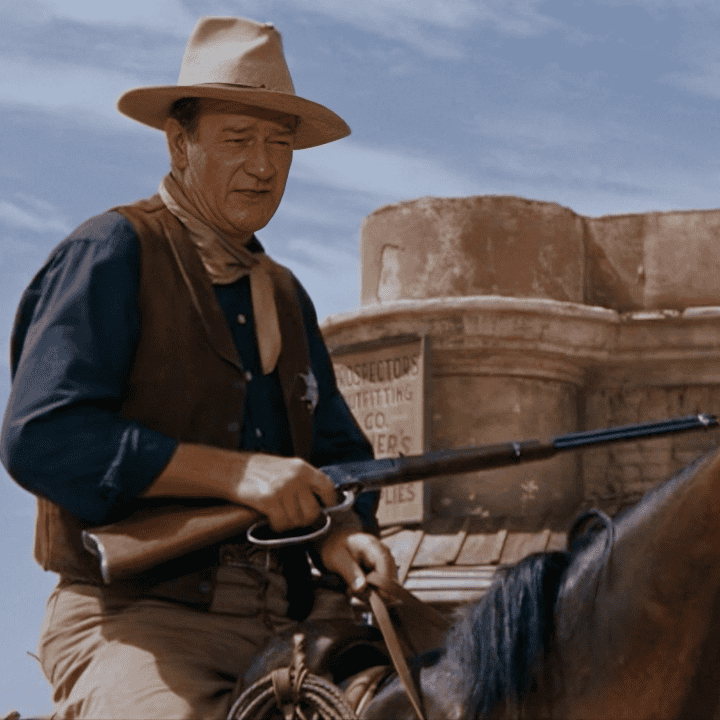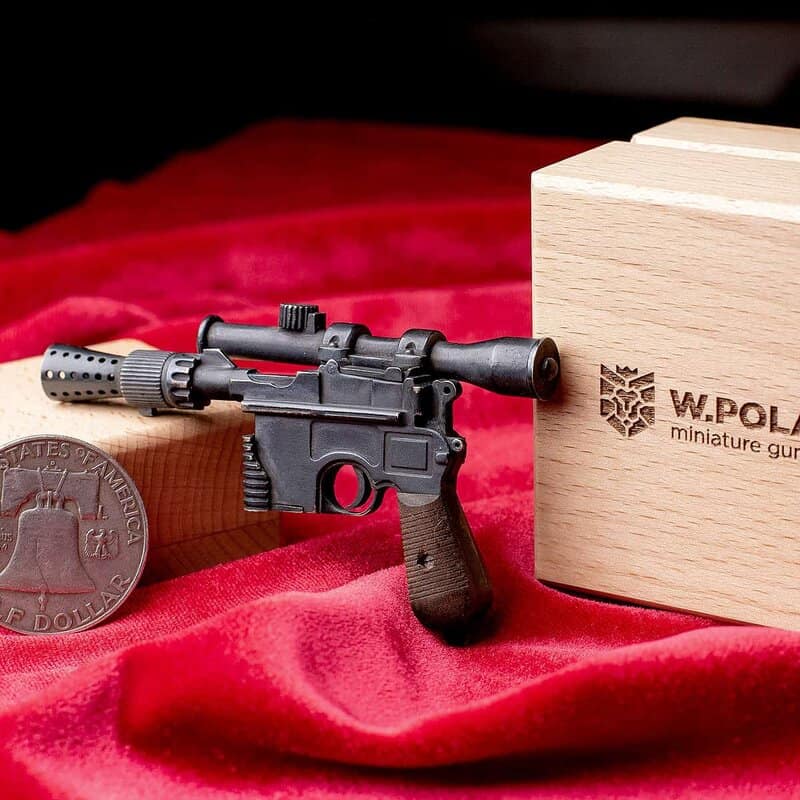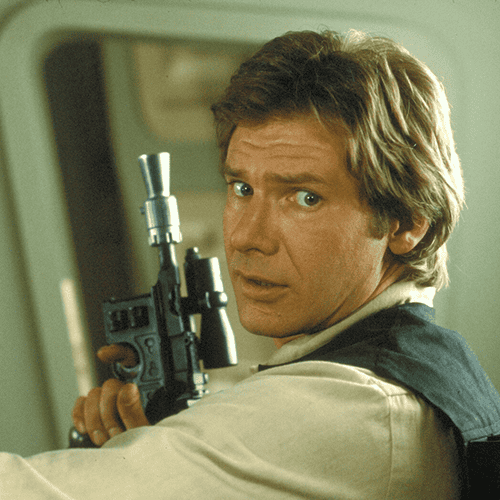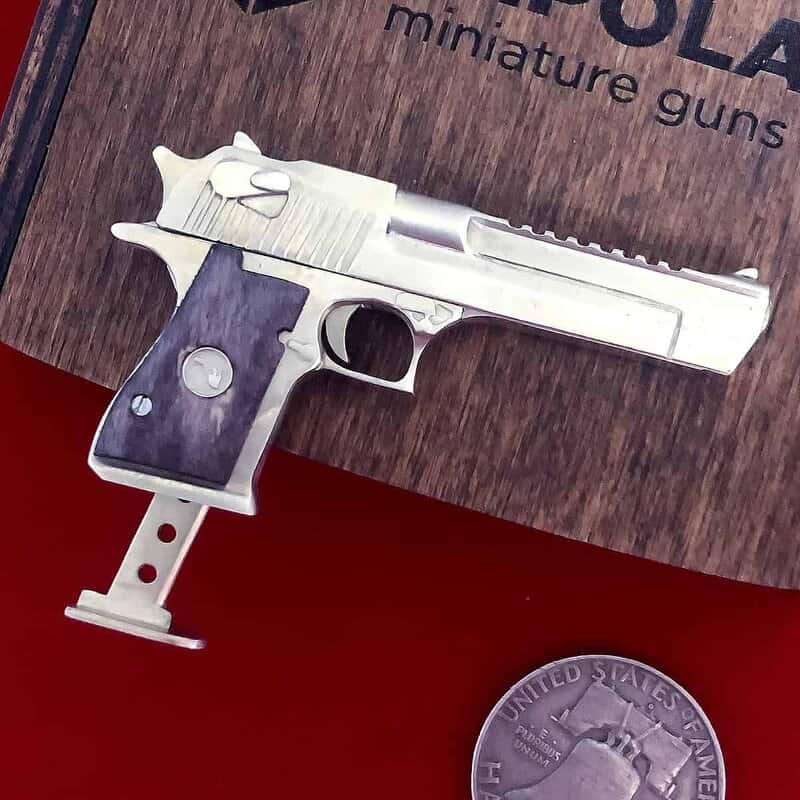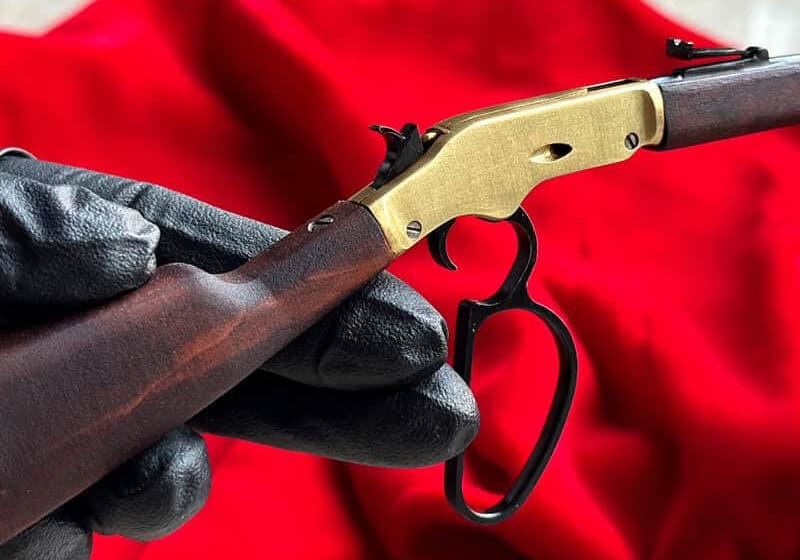Fully Functional Miniature Weapon Models Crafted with Exceptional Quality and a Lifetime Service Guarantee
Hollywood’s Arsenal: Cinema’s Influence on Real-World Weapons
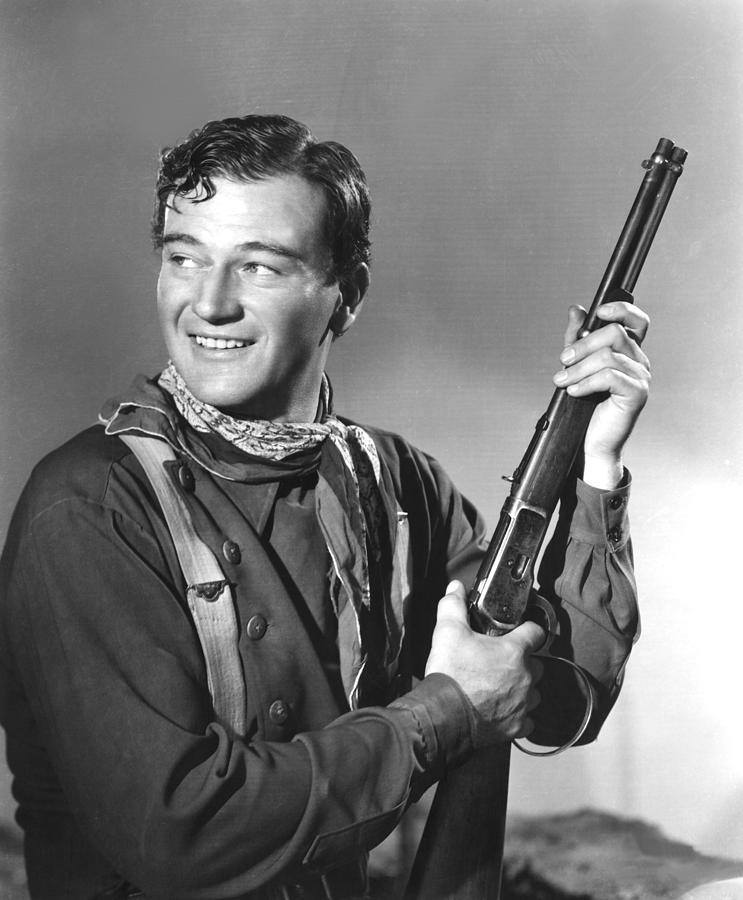
Cinema has long shaped our perceptions of firearms, blurring the line between fiction and reality. From iconic blasters in sci-fi epics to the sleek pistols of action thrillers, the silver screen doesn’t just entertain—it influences real-world weapon design, marketing, and public sentiment. This article delves into how cinematic portrayals of guns have impacted their real-life counterparts, exploring the dynamic interplay between Hollywood’s creative visions and the tangible world of weaponry.
Winchester Model 1892 & John Wayne Rifle
When you picture a classic Western, chances are a lever-action Winchester is part of that scene. And more often than not, the man holding it is John Wayne. The Duke didn’t just use the Winchester Model 1892; he made it an extension of his iconic on-screen persona, forever linking the rifle to the rugged heroism of the American frontier.
While the Winchester was already a respected firearm, its portrayal in Wayne’s hands, particularly in dozens of films, elevated it to legendary status. One of the most visually distinct features popularized by Wayne was the oversized “loop” lever. Though such levers existed historically for cold-weather use with gloves, Wayne’s on-screen adoption made it a signature. This modification wasn’t necessarily about enhancing practical field performance for the average shooter; it was about visual flair and adding to the larger-than-life image of the movie cowboy.
The sight of Wayne expertly cycling that large loop lever became an instantly recognizable symbol. It spoke of quick action, reliability, and a certain cool confidence. This cinematic portrayal heavily influenced public perception and desirability. Suddenly, a Winchester with a large loop lever wasn’t just a rifle; it was “the John Wayne rifle.”
This demand, fueled by Hollywood, led to increased production of Winchesters with this feature, as well as aftermarket modifications for existing rifles. Gunsmiths and manufacturers recognized the appeal that cinema had cultivated.
So, while the Winchester 1892 was a formidable firearm in its own right, John Wayne’s cinematic embrace significantly shaped its image and even its physical appearance for generations of moviegoers and firearm enthusiasts. He didn’t invent the rifle, but he undeniably helped forge its enduring legend on the silver screen, ensuring the “cowboy repeater” with its distinctive lever would remain an iconic piece of Americana.
Hasta la Vista, Stock: How “Terminator 2” Redefined the Winchester 1887
Another Winchester, the Model 1887 shotgun, received a dramatic and unforgettable cinematic makeover decades later in “Terminator 2: Judgment Day.” This wasn’t about historical accuracy or traditional use; it was pure Hollywood badassery, and it had a significant impact.
In the film, Arnold Schwarzenegger’s T-800 wields a heavily modified Winchester 1887. The most striking alteration was its drastically shortened barrel and cut-down stock, transforming it into a formidable, one-handed “mare’s leg” style shotgun. This wasn’t the typical fowling piece or guard gun; it was a weapon visually tailored for an unstoppable cyborg. The unique flip-cocking maneuver Schwarzenegger performed to reload it, spinning the shotgun with one hand, became an iconic cinematic moment, much like Wayne’s handling of his lever-action.
This dramatic, almost brutalist, presentation of the 1887 shotgun captivated audiences. It was a perfect example of a cinematic technique similar to what made John Wayne’s rifles famous: take a distinctive firearm, modify it for visual impact, and put it in the hands of a compelling character performing memorable actions. The result? A surge in the weapon’s cool factor and recognition.
Crucially, this on-screen popularity translated directly into the real world. After “Terminator 2,” interest in the Winchester Model 1887, particularly in its “Terminator” configuration, skyrocketed. Firearm enthusiasts and collectors sought out original 1887s for similar modifications, and manufacturers responded to the newfound demand. Companies began producing replicas and similarly styled lever-action shotguns, often marketed with explicit or implicit nods to the film. What was once a somewhat niche, antique firearm found a new lease on life and a fresh wave of popularity, all thanks to its unforgettable role as the T-800’s signature weapon.
“Terminator 2” didn’t just feature a Winchester 1887; it reinvented it for a new generation, proving once again cinema’s power to transform a firearm’s image and drive its popularity in the real world.
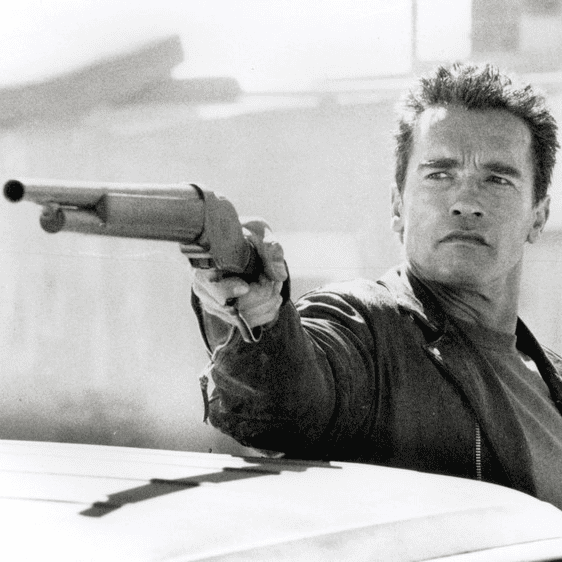
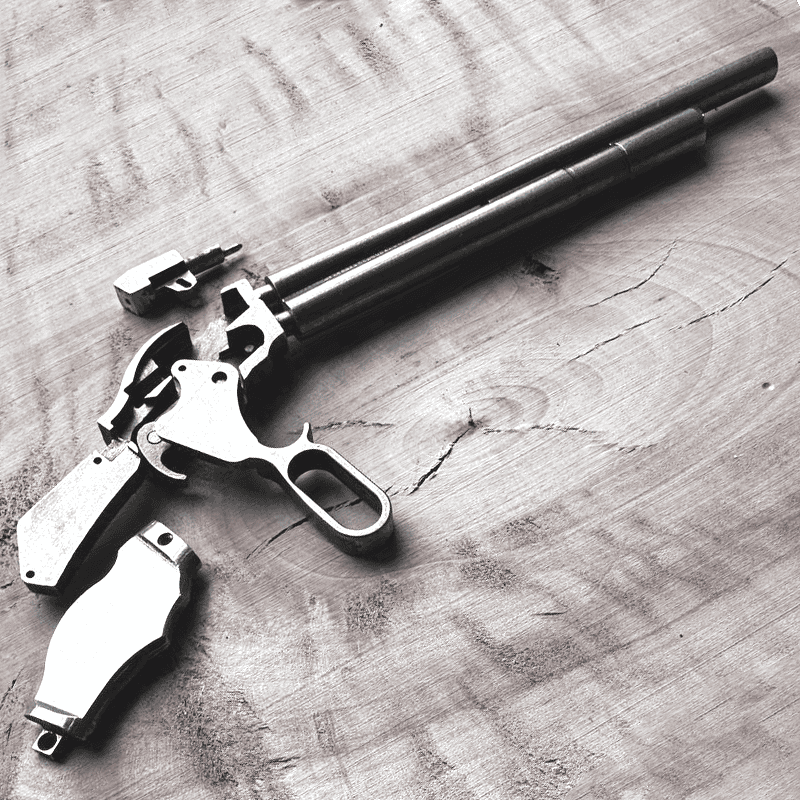
The Mauser C96’s Journey to Star Wars Royalty
Few firearms have a silhouette as instantly recognizable as the Mauser C96 “Broomhandle.” But for millions, its distinctive shape is more famously known as the base for Han Solo’s iconic DL-44 Heavy Blaster Pistol from the Star Wars saga. This transformation of a historic German pistol into a beloved sci-fi weapon is a classic tale of cinematic ingenuity and its lasting impact.
When prop masters for “Star Wars: A New Hope” needed a rugged, distinctive sidearm for the galaxy’s most charming rogue, they turned to the Mauser C96. Its somewhat antique, yet robust and complex appearance provided the perfect foundation for a weapon from “a long time ago in a galaxy far, far away.” The Mauser’s existing anachronistic charm was ideal for George Lucas’s vision of a “used universe,” where technology was often old, battered, but reliable.
To create the DL-44, the real Mauser C96 underwent several key modifications:
Barrel and Muzzle Device: A prominent, large muzzle cone, often identified as being derived from a World War II-era German MG81 machine gun’s flash hider (or a similar part), was added. This immediately gave the pistol a more aggressive and futuristic look.
Scope: A vintage telescopic sight (specifically, a Hensoldt & Wetzlar Ziel Dialyth 3x scope, or similar period optics) was mounted on the right-hand side. This rather oversized scope, often humorously noted as rarely being used by Han for actual aiming, became one of the blaster’s most defining visual features.
“Greeblies”: Various other small, often unidentifiable, pieces of technical-looking “greeblies” (a term for detailed, often non-functional, surface additions to props) were attached to further disguise its earthly origins and enhance its sci-fi aesthetic.
The on-screen presence of this modified Mauser, wielded with charismatic swagger by Harrison Ford as Han Solo, cemented the DL-44 as one of cinema’s most legendary weapons. It wasn’t just a prop; it was an extension of Han’s cool, resourceful, and slightly dangerous personality. The blaster looked powerful, a bit jury-rigged, and utterly unique – perfect for a smuggler making his way through the galaxy.
This cinematic transformation had a significant real-world impact. After Star Wars, the Mauser C96 gained a new layer of fame. While already a collector’s item, its association with Han Solo introduced it to a massive new audience.
Increased Popularity and Recognition: Fans of Star Wars, many of whom might not have been traditional firearm enthusiasts, became aware of the C96.
Demand for Replicas: The desire to own a “Han Solo blaster” spurred a cottage industry of replica props, from non-functional toys to highly detailed custom builds. Enthusiasts and prop makers meticulously researched the original prop’s components to create accurate reproductions.
Influence on Collectors: Ironically, the popularity of the DL-44 even led to concerns among some Mauser collectors, as genuine C96 pistols were sometimes being irreversibly altered by fans attempting to create their own live-firing blaster replicas, potentially damaging increasingly rare historical firearms.
The story of the Mauser C96 and the DL-44 blaster is a prime example of how a real-world object, through creative modification and iconic cinematic placement, can transcend its original identity to become a beloved piece of pop culture lore, forever linking a early 20th-century German pistol with a beloved space opera.
How Hollywood Forged the Desert Eagle’s larger-than-life image
If there’s one handgun that screams “movie gun,” it’s the Desert Eagle. This behemoth of a pistol, known for its imposing size and chambering in powerful magnum calibers like the .50 Action Express, was practically tailor-made for the silver screen. While a remarkable piece of engineering, its real-world practicality for military or police use is limited due to its weight, recoil, and capacity. However, in the world of cinema, these are often the very characteristics that make it a star.
Hollywood quickly latched onto the Desert Eagle’s “brutal” and visually arresting appearance. It became the firearm of choice for over-the-top action heroes, menacing villains, and characters who needed to make an undeniable statement. Movies like “RoboCop,” “The Matrix,” “Snatch,” “Commando,” “Last Action Hero,” and countless others showcased the Desert Eagle, often emphasizing its sheer power and destructive capability. In many of these appearances, the pistol wasn’t just a tool; it was a character statement, a symbol of ultimate handheld firepower.
As you correctly pointed out, one of the most significant impacts of its cinematic career was the popularization of non-standard, flashy finishes. While standard blued or black finishes were available, it was the gleaming chrome-plated and ostentatious gold-finished Desert Eagles, frequently seen in films and later in video games, that truly captured the public’s imagination. These “blinged-out” versions epitomized a certain kind of cinematic excess and cool.
This on-screen glamour had a direct effect on the consumer market:
Increased Demand for “Movie” Versions: After seeing these striking finishes in the hands of their favorite action stars or video game protagonists, many enthusiasts and collectors wanted their own “movie version” of the Desert Eagle. Magnum Research, the manufacturer, and aftermarket customizers responded to this demand by offering these more exotic finishes.
Pop Culture Icon Status: The Desert Eagle, particularly in its .50 AE chambering and often with a shiny finish, transcended being just a firearm. It became a pop culture icon, instantly recognizable even to those with little interest in guns. Its silhouette is synonymous with cinematic power.
Solicitation by Manufacturers: It’s well-documented that Magnum Research actively encouraged Hollywood prop houses to feature the Desert Eagle in films, understanding the immense marketing power of such appearances. This strategy clearly paid off, cementing the gun’s legendary status.
Symbol of Excess: The Desert Eagle in cinema often symbolizes a character’s wealth, power, or an almost superhuman ability to handle such a formidable weapon. This larger-than-life portrayal is precisely what made it so appealing.
While a standard Desert Eagle is already an intimidating firearm, it was Hollywood’s love affair with its most audacious and visually striking versions – especially the chrome and gold models – that truly defined its public image and fueled a desire for these “cinematic” configurations in the real world. It stands as a powerful testament to how film can shape not just perception, but the actual aesthetic trends of a product.
In conclusion, I’ve seen how deeply cinema influences real-world weapon design and how we perceive firearms. My exploration of the transformation of real guns into iconic on-screen weapons clearly demonstrates the strong and reciprocal relationship between Hollywood and the arms industry. This connection is absolute and influential. This relationship not only influences how weapons appear and operate, but it also impacts how society perceives and feels about them. As the portrayal of firearms in film continues to evolve, I believe this interplay between fiction and reality will only grow more significant.
John Wayne’s Rifle (1:6 Scale)
A highly detailed, fully functional miniature model of the legendary Winchester chambered for a 2mm ammo.
This cowboy rifle is crafted from high-quality metal and wood, faithfully replicating the firearm famously used by actor John Wayne in his films.
The firing mechanism adds interactivity, allowing for a realistic shooting effect. Combined with its miniature scale, this creates a truly unforgettable experience.
About the Author
My name is Olha Polah, and I have been working in miniature weapons production since 2015. I started the mini firearms brand and have been running the brand’s Instagram page since 2016. The brand’s miniatures are popular worldwide, with fans in 25+ countries. I became the sole owner of the brand in 2018 and created a comprehensive line of miniatures. More than 60 models of miniature weapons from various historical periods have been created. In November 2023, I was interviewed by Robert Dunn for the GunTech magazine, where I talked about the hardships I had to endure in my business. I also run a newsletter for the brand’s customers, which has evolved into a full-fledged magazine with in-depth articles published on the wpolah.com.

My mission is to make people’s lives more joyful by sharing interesting facts about miniature weapons and inspiring everyone to express themselves.

